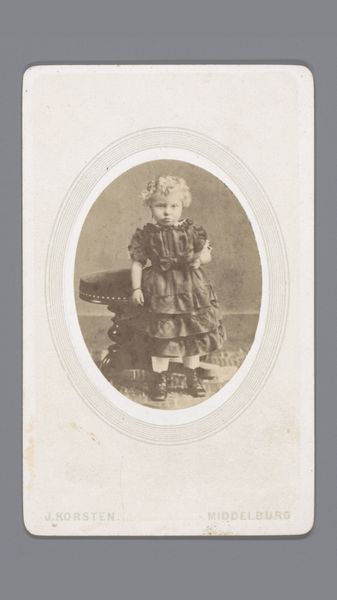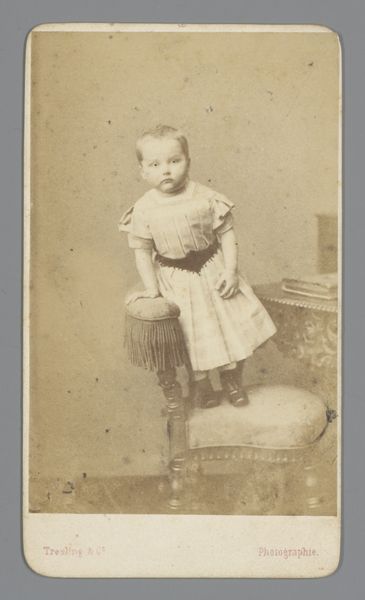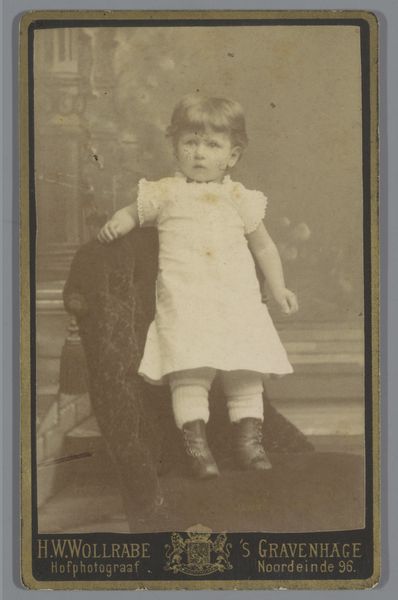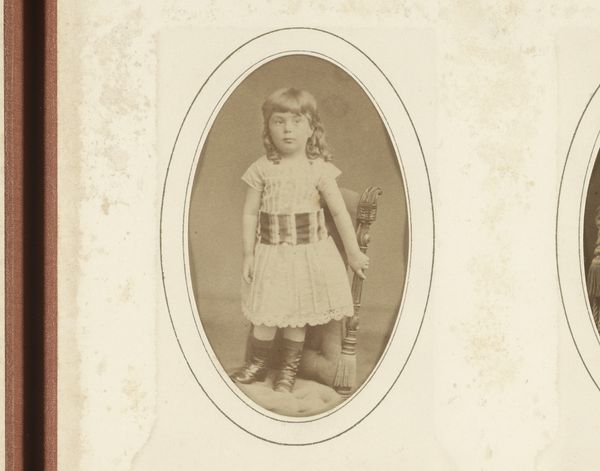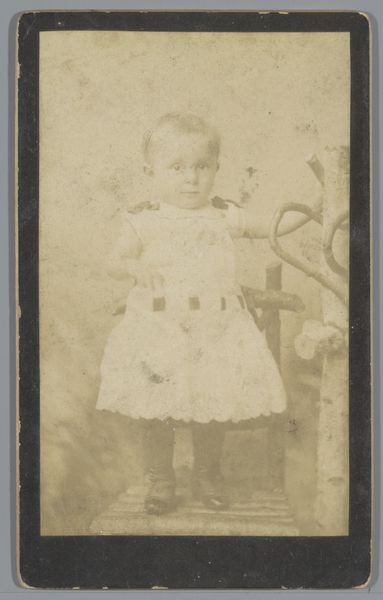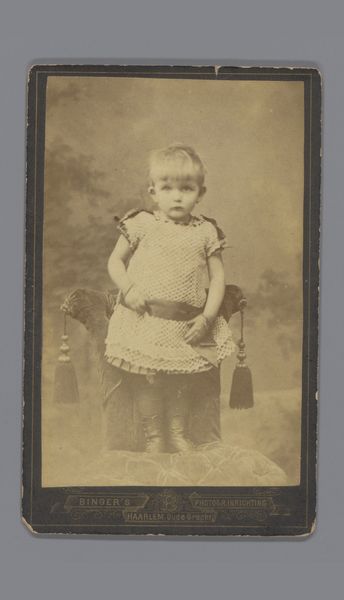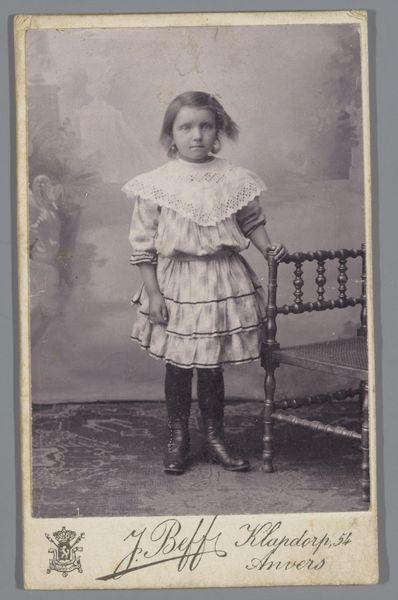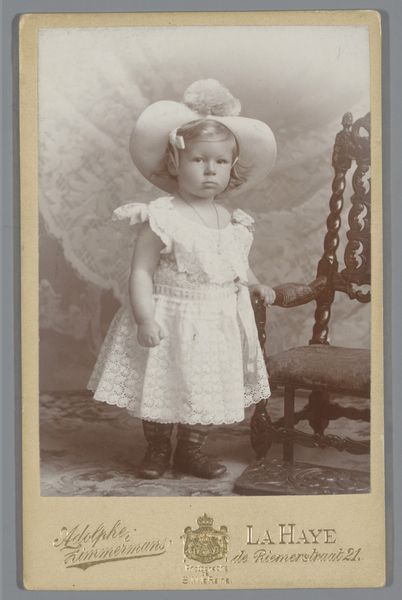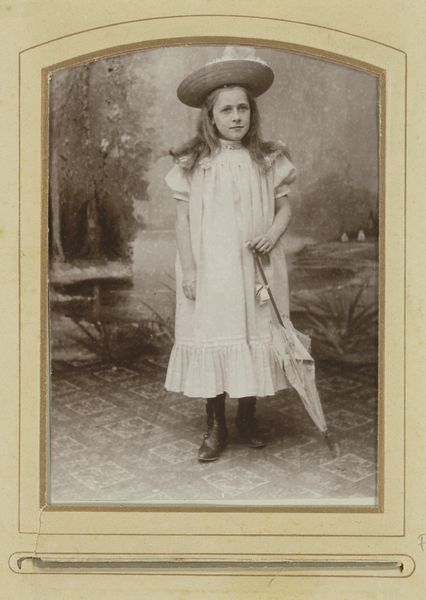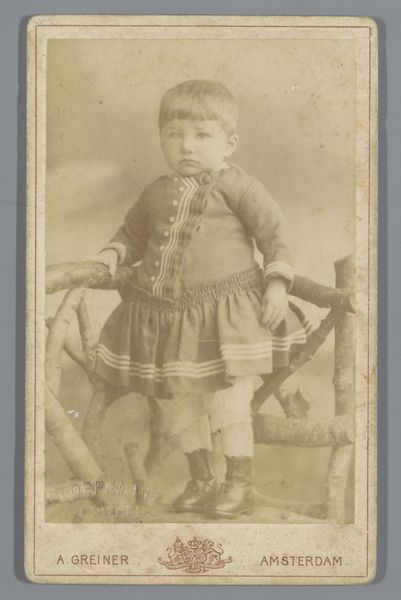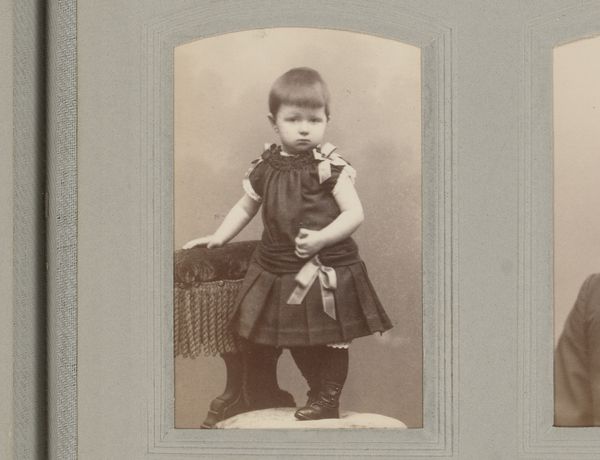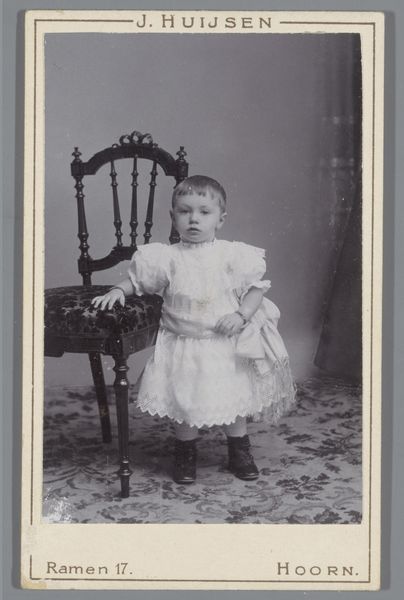
paper, photography
#
portrait
#
aged paper
#
pictorialism
#
paper
#
photography
#
genre-painting
#
paper medium
Dimensions: height 105 mm, width 46 mm
Copyright: Rijks Museum: Open Domain
Curator: This is "Portrait of a Girl with a Doll Carriage," dating back to before 1910, attributed to Atelier Kleiber, presented as a photographic print on paper. Editor: It's giving major eerie Victorian vibes! The hazy background, the stiff pose, and that antique doll carriage… I almost expect the doll's eyes to blink. Curator: Pictorialism as a movement strived to elevate photography to fine art status. Consider how the soft focus and tonal range were used to mimic paintings, often obscuring photographic details for a painterly feel. How might this relate to prevailing social constructions around children and ideal femininity? Editor: That's a heavy question for a Tuesday morning, but, okay, I see what you're saying. This idealized innocence, carefully constructed through posing, lighting, and even costume… It's all very deliberate, right? The crisp white collar frames the face in what reads almost as purity. Curator: Absolutely. Her attire signals upper-middle-class status, highlighting the way photography was being employed to construct and disseminate ideas about domesticity, gender, and class at the turn of the century. Editor: And the doll carriage becomes a miniature emblem of her future role, right? Training for motherhood, or perhaps merely echoing a specific idea about girls' supposed nurturing instinct. It's funny, isn't it, how a photograph aiming for timelessness gets so deeply entangled in its own historical moment? Curator: The historical lens offers an opportunity to examine photography as a technology that's deeply implicated in power dynamics of representation, in the history of colonialism and ideas around childhood innocence. How does a piece like this challenge us to think about children labor and education today? Editor: Okay, it definitely shook me out of my initial creepy doll association. Seeing it as this visual product of very specific social structures is fascinating... it sort of punctures the sentimentality. I now think it's sort of poignant to imagine what was unseen about a young girl's experience in that era. Curator: Precisely, art provides a powerful resource for historical self-awareness and critical examination of contemporary society. Editor: It really makes you wonder about her dreams outside the frame, you know? What else might have been going on with this girl and her future besides the narrative of privileged innocence.
Comments
No comments
Be the first to comment and join the conversation on the ultimate creative platform.
